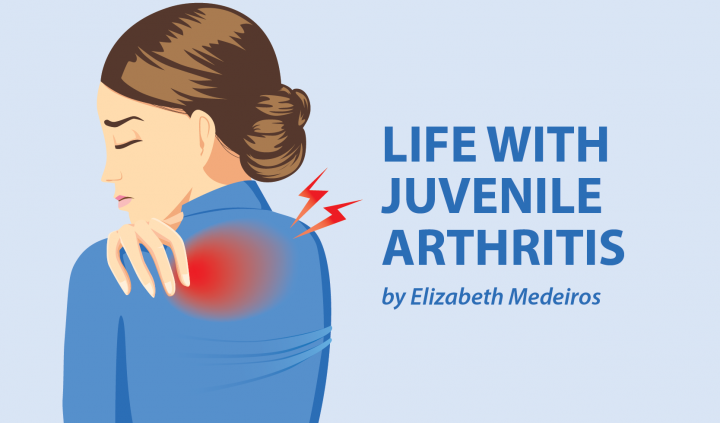I believe that some people considered me to be a lazy teenager. While my grades were fantastic, and I carried out community service for a few hours a week for the National Honor Society, I didn’t do much else. I didn’t work in the local grocery store like most of my friends and rarely participated in clubs. Most days after school, I crashed on the couch and would call friends on Skype instead of hanging out with them.
But when I look back, I remember how drained I felt most of the time. Some days I dragged and felt like a zombie. Like many others with juvenile arthritis (JA), I’ve found fatigue to be one of my most overwhelming symptoms.
An invisible symptom
Unfortunately for kids with JA, their fatigue can be equally as invisible as the pain. Some kids might have dark circles if they aren’t sleeping well due to the pain, but otherwise, fatigue is unnoticeable, and this can lead to a lot of unfair judgment.
Others don’t realize how overpowering fatigue from ongoing pain and inflammation can be and assume that it’s no worse than feeling a little tired at the end of a long day. But it’s not that simple. Fatigue from JA isn’t merely feeling tired: It’s being drained of all energy. Some days when I can’t move a muscle, it feels as if gravity has been multiplied by a thousand.
Unfair labels
People can be judgmental of chronic fatigue, especially in children. Young people may be labeled lazy because they need extra rest. Teens, in particular, may hear comments about how idle they are if they’re unable to keep a part-time job or do extracurricular activities. It’s not uncommon for young adults to feel pressured to push themselves to unhealthy levels to keep up with their peers and avoid criticism.
But having chronic fatigue doesn’t make someone lazy: It makes rest and self-care more essential. It’s unfair to label someone with an autoimmune disorder as lazy when they’re drained of energy. You cannot pour from an empty cup.
Ways to cope
Fatigue can be hard to deal with, but there are ways to manage it. A healthy diet is a good start. Vitamin deficiencies can cause severe fatigue, and many studies have noted that kids with JA tend to be vitamin D-deficient. It’s also essential to find a treatment plan that works and to stick to it, though it can take some trial and error.
Surprisingly, exercise can be a great way to fight fatigue. However, it’s important not to overdo it. I’ve heard “push past the fatigue” many times, but I’ve learned that overextending myself will make it worse. It’s much more effective to start an exercise routine and increase the intensity over time. Begin with short walks, swims, or bike rides and build it up gradually.
No pressure
Stress can also cause fatigue. School tensions, peer pressure, bullying over social media, and other burdens can make kids feel like they’re carrying the weight of the world on their shoulders, on top of dealing with JA. Not to mention, some kids may push themselves beyond their limits to please others or to avoid being seen as lazy.
I think that being compassionate is the best way to support a young person with chronic fatigue due to JA. Although you may be unable to see it, they’re fighting a daily battle against JA. Be gentle with them, and encourage them to keep moving, but at a comfortable pace.
As a teenager, I was fortunate to have sympathetic parents. Though they expected me to do my best in school, I could limit my extracurriculars. They encouraged me to find part-time work that didn’t require standing for hours. Their reassurance led to my first job, illustrating a children’s book. For the first time, I realized that despite having JA, I was capable of doing amazing things. It also made me realize that having a support team who worked with my chronic fatigue made a positive difference.
***
Note: Juvenile Arthritis News is strictly a news and information website about the disease. It does not provide medical advice, diagnosis, or treatment. This content is not intended to be a substitute for professional medical advice, diagnosis, or treatment. Always seek the advice of your physician or other qualified health provider with any questions you may have regarding a medical condition. Never disregard professional medical advice or delay in seeking it because of something you have read on this website. The opinions expressed in this column are not those of Juvenile Arthritis News, or its parent company, BioNews Services, and are intended to spark discussion about issues pertaining to juvenile arthritis.

